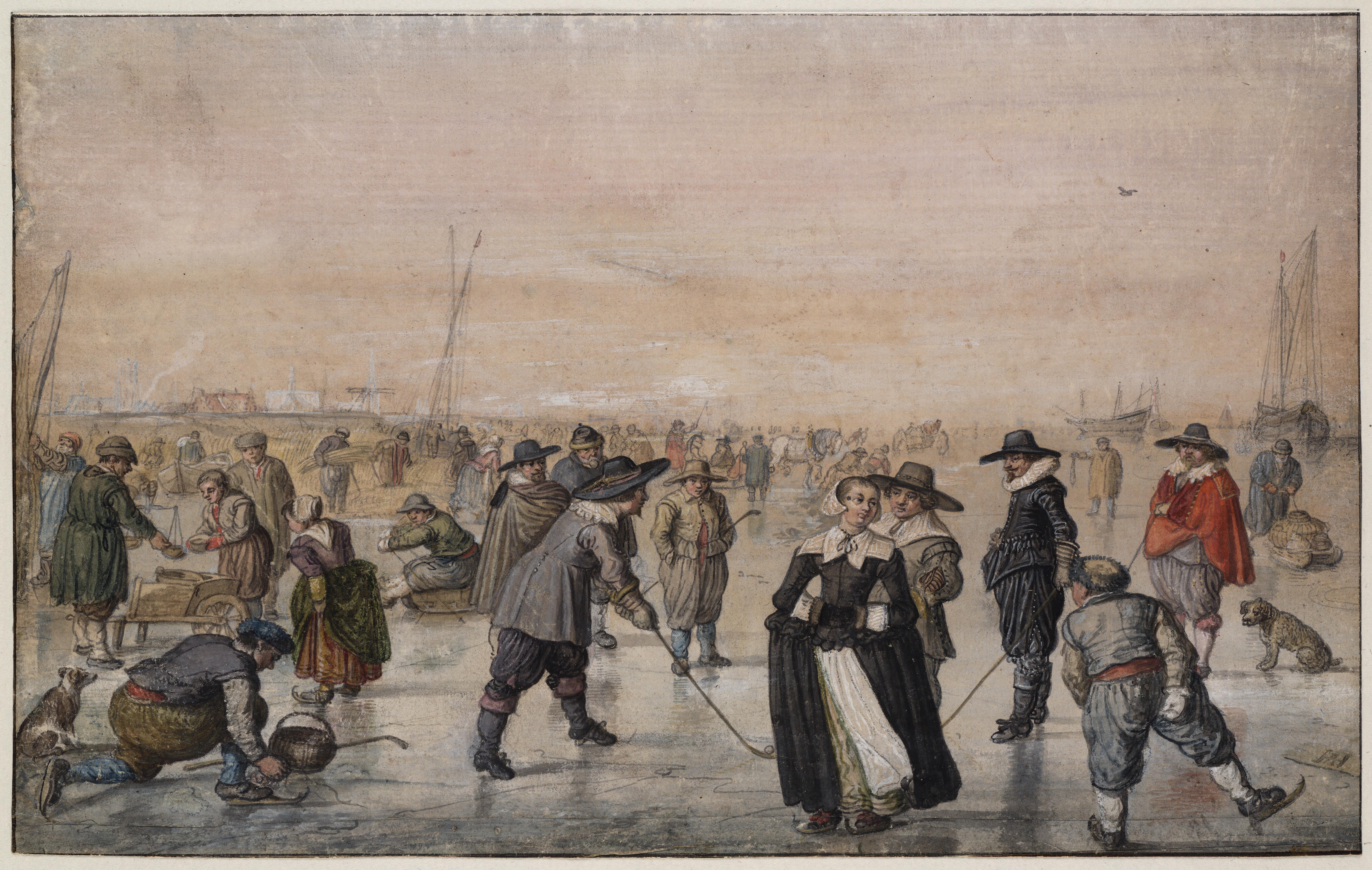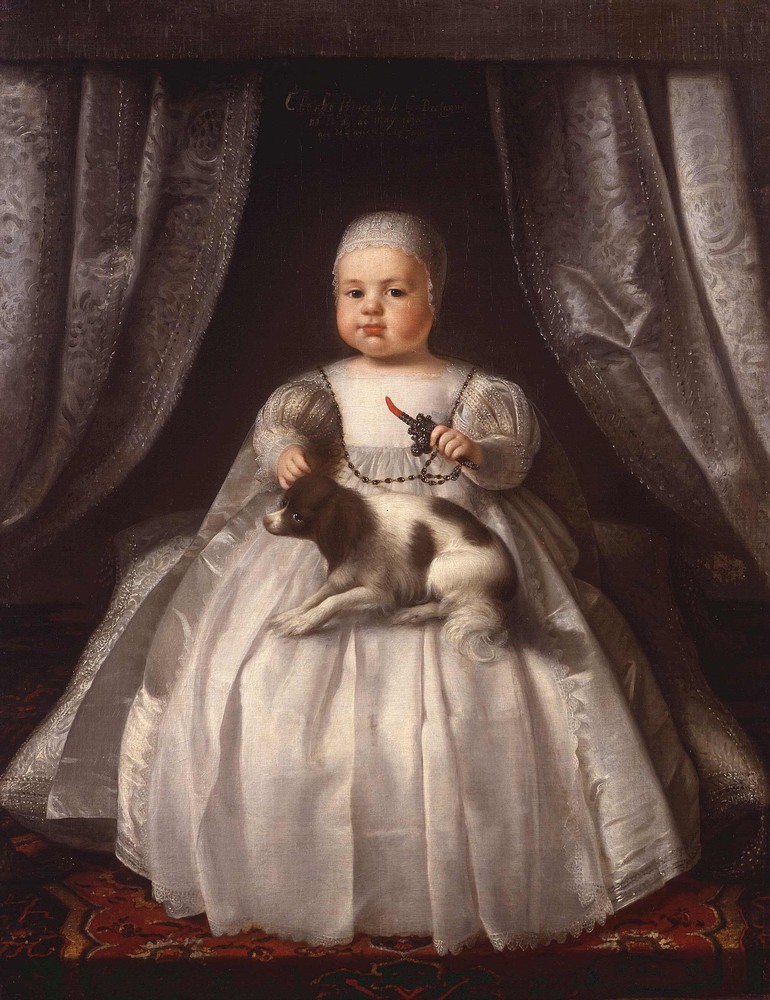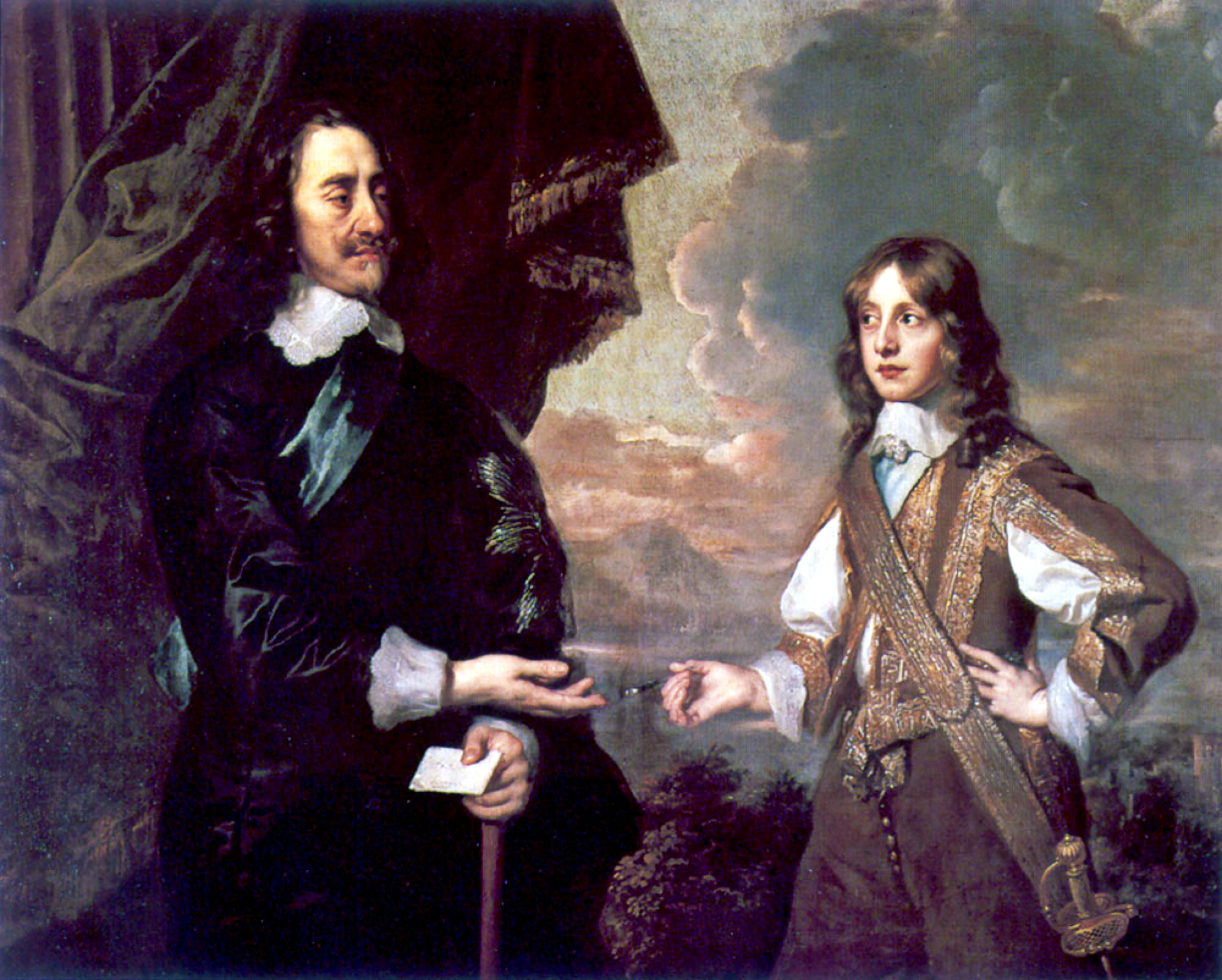|
Elizabeth Waller, Baroness Shelburne
Elizabeth Waller, Baroness Shelburne (February 1708) was an Anglo-Irish peer. Elizabeth Waller was born in Castleton, County Limerick, one of the four daughters of Elizabeth Dowdall (died 1658) and Sir Hardress Waller (–1666). Her father was one of the regicides who condemned Charles I to death. After the Restoration of Charles II he was in his turn sentenced to death after being found guilty of regicide, but he was reprieved, and died in prison. Her mother was noted for her spirited defence of the family home, Kilfinny Castle, during the Irish Rebellion of 1641. On 23 October 1653 she married Sir Maurice Fenton, 1st Baronet (–1664). They had a daughter Margaret and a son William. Margaret died in 1667 unmarried. William died in 1670. In 1667 she married secondly Sir William Petty (1623–1687). Lady Elizabeth and William Petty had four children: * Anne Petty (died November 1737) * John (–) * Charles Petty, 1st Baron Shelburne (1672–1696) * Henry Petty, 1st Earl of Shelbu ... [...More Info...] [...Related Items...] OR: [Wikipedia] [Google] [Baidu] |
Anglo-Irish
Anglo-Irish people () denotes an ethnic, social and religious grouping who are mostly the descendants and successors of the English Protestant Ascendancy in Ireland. They mostly belong to the Anglican Church of Ireland, which was the established church of Ireland until 1871, or to a lesser extent one of the English dissenting churches, such as the Methodist church, though some were Roman Catholics. They often defined themselves as simply "British", and less frequently "Anglo-Irish", "Irish" or "English". Many became eminent as administrators in the British Empire and as senior army and naval officers since Kingdom of England and Great Britain were in a real union with the Kingdom of Ireland until 1800, before politically uniting into the United Kingdom of Great Britain and Ireland) for over a century. The term is not usually applied to Presbyterians in the province of Ulster, whose ancestry is mostly Lowland Scottish, rather than English or Irish, and who are sometimes id ... [...More Info...] [...Related Items...] OR: [Wikipedia] [Google] [Baidu] |
Baroness Shelburne
Baron is a rank of nobility or title of honour, often hereditary, in various European countries, either current or historical. The female equivalent is baroness. Typically, the title denotes an aristocrat who ranks higher than a lord or knight, but lower than a viscount or count. Often, barons hold their fief – their lands and income – directly from the monarch. Barons are less often the vassals of other nobles. In many kingdoms, they were entitled to wear a smaller form of a crown called a ''coronet''. The term originates from the Latin term , via Old French. The use of the title ''baron'' came to England via the Norman Conquest of 1066, then the Normans brought the title to Scotland and Italy. It later spread to Scandinavia and Slavic lands. Etymology The word '' baron'' comes from the Old French , from a Late Latin "man; servant, soldier, mercenary" (so used in Salic law; Alemannic law has in the same sense). The scholar Isidore of Seville in the 7th century ... [...More Info...] [...Related Items...] OR: [Wikipedia] [Google] [Baidu] |
Life Peeresses Created By James VII And II
Life is a quality that distinguishes matter that has biological processes, such as Cell signaling, signaling and self-sustaining processes, from that which does not, and is defined by the capacity for Cell growth, growth, reaction to Stimulus (physiology), stimuli, metabolism, energy transformation, and reproduction. Various forms of life exist, such as plants, animals, fungi, protists, archaea, and bacteria. Biology is the science that studies life. The gene is the unit of heredity, whereas the Cell (biology), cell is the structural and functional unit of life. There are two kinds of cells, prokaryotic and eukaryotic, both of which consist of cytoplasm enclosed within a membrane and contain many biomolecules such as proteins and nucleic acids. Cells reproduce through a process of cell division, in which the parent cell divides into two or more daughter cells and passes its genes onto a new generation, sometimes producing genetic variation. Organisms, or the individual en ... [...More Info...] [...Related Items...] OR: [Wikipedia] [Google] [Baidu] |
Petty-Fitzmaurice Family
Petty-Fitzmaurice is a double-barrelled surname of Irish origin. People with the name Petty-Fitzmaurice include: * Charles Petty-Fitzmaurice, 7th Marquess of Lansdowne (1917–1944), peer of Great Britain * Charles Petty-Fitzmaurice, 9th Marquess of Lansdowne (born 1941), British peer * Lord Charles Petty-FitzMaurice (1874–1914), British soldier and courtier * Emily Petty-Fitzmaurice, Marchioness of Lansdowne (1819–1895), British peer * George Petty-Fitzmaurice, 8th Marquess of Lansdowne (1912–1997), British peer * Georgina Elizabeth Petty-Fitzmaurice (born 1950), Scottish nobility * Henry Petty-Fitzmaurice, 3rd Marquess of Lansdowne (1780–1863), Irish peer * Henry Petty-Fitzmaurice, 4th Marquess of Lansdowne (1816–1866), British politician * Henry Petty-Fitzmaurice, 5th Marquess of Lansdowne (1845–1927), British politician and Irish peer * Henry Petty-Fitzmaurice, 6th Marquess of Lansdowne (1872–1936), Earl of Kerry * Maud Petty-FitzMaurice, Marchioness of La ... [...More Info...] [...Related Items...] OR: [Wikipedia] [Google] [Baidu] |
Irish Baronesses
Irish may refer to: Common meanings * Someone or something of, from, or related to: ** Ireland, an island situated off the north-western coast of continental Europe ***Éire, Irish language name for the isle ** Northern Ireland, a constituent unit of the United Kingdom of Great Britain and Northern Ireland ** Republic of Ireland, a sovereign state * Irish language, a Celtic Goidelic language of the Indo-European language family spoken in Ireland * Irish people, people of Irish ethnicity, people born in Ireland and people who hold Irish citizenship Places * Irish Creek (Kansas), a stream in Kansas * Irish Creek (South Dakota), a stream in South Dakota * Irish Lake, Watonwan County, Minnesota * Irish Sea, the body of water which separates the islands of Ireland and Great Britain People * Irish (surname), a list of people * William Irish, pseudonym of American writer Cornell Woolrich (1903–1968) * Irish Bob Murphy, Irish-American boxer Edwin Lee Conarty (1922–1961) * Irish McCal ... [...More Info...] [...Related Items...] OR: [Wikipedia] [Google] [Baidu] |
Barons In The Peerage Of Ireland
Baron is a rank of nobility or title of honour, often Hereditary title, hereditary, in various European countries, either current or historical. The female equivalent is baroness. Typically, the title denotes an aristocrat who ranks higher than a lord or knight, but lower than a viscount or count. Often, barons hold their fief – their lands and income – directly from the monarch. Barons are less often the vassals of other nobles. In many kingdoms, they were entitled to wear a smaller form of a crown called a ''coronet''. The term originates from the Late Latin, Latin term , via Old French. The use of the title ''baron'' came to England via the Norman Conquest of 1066, then the Normans brought the title to Scotland and Italy. It later spread to Scandinavia and Slavic lands. Etymology The word '':wikt:baron, baron'' comes from the Old French , from a Late Latin "man; servant, soldier, mercenary" (so used in Salic law; Alemannic law has in the same sense). The scholar ... [...More Info...] [...Related Items...] OR: [Wikipedia] [Google] [Baidu] |
17th-century Irish Women
The 17th century lasted from January 1, 1601 ( MDCI), to December 31, 1700 ( MDCC). It falls into the early modern period of Europe and in that continent (whose impact on the world was increasing) was characterized by the Baroque cultural movement, the latter part of the Spanish Golden Age, the Dutch Golden Age, the French ''Grand Siècle'' dominated by Louis XIV, the Scientific Revolution, the world's first public company and megacorporation known as the Dutch East India Company, and according to some historians, the General Crisis. From the mid-17th century, European politics were increasingly dominated by the Kingdom of France of Louis XIV, where royal power was solidified domestically in the civil war of the Fronde. The semi-feudal territorial French nobility was weakened and subjugated to the power of an absolute monarchy through the reinvention of the Palace of Versailles from a hunting lodge to a gilded prison, in which a greatly expanded royal court could be more easily k ... [...More Info...] [...Related Items...] OR: [Wikipedia] [Google] [Baidu] |
17th-century English People
The 17th century lasted from January 1, 1601 ( MDCI), to December 31, 1700 ( MDCC). It falls into the early modern period of Europe and in that continent (whose impact on the world was increasing) was characterized by the Baroque cultural movement, the latter part of the Spanish Golden Age, the Dutch Golden Age, the French ''Grand Siècle'' dominated by Louis XIV, the Scientific Revolution, the world's first public company and megacorporation known as the Dutch East India Company, and according to some historians, the General Crisis. From the mid-17th century, European politics were increasingly dominated by the Kingdom of France of Louis XIV, where royal power was solidified domestically in the civil war of the Fronde. The semi-feudal territorial French nobility was weakened and subjugated to the power of an absolute monarchy through the reinvention of the Palace of Versailles from a hunting lodge to a gilded prison, in which a greatly expanded royal court could be more easily k ... [...More Info...] [...Related Items...] OR: [Wikipedia] [Google] [Baidu] |
17th-century English Women
The 17th century lasted from January 1, 1601 ( MDCI), to December 31, 1700 ( MDCC). It falls into the early modern period of Europe and in that continent (whose impact on the world was increasing) was characterized by the Baroque cultural movement, the latter part of the Spanish Golden Age, the Dutch Golden Age, the French ''Grand Siècle'' dominated by Louis XIV, the Scientific Revolution, the world's first public company and megacorporation known as the Dutch East India Company, and according to some historians, the General Crisis. From the mid-17th century, European politics were increasingly dominated by the Kingdom of France of Louis XIV, where royal power was solidified domestically in the civil war of the Fronde. The semi-feudal territorial French nobility was weakened and subjugated to the power of an absolute monarchy through the reinvention of the Palace of Versailles from a hunting lodge to a gilded prison, in which a greatly expanded royal court could be more easily k ... [...More Info...] [...Related Items...] OR: [Wikipedia] [Google] [Baidu] |
Charles II Of England
Charles II (29 May 1630 – 6 February 1685) was King of Scotland from 1649 until 1651, and King of England, Scotland and Ireland from the 1660 Restoration of the monarchy until his death in 1685. Charles II was the eldest surviving child of Charles I of England, Scotland and Ireland and Henrietta Maria of France. After Charles I's execution at Whitehall on 30 January 1649, at the climax of the English Civil War, the Parliament of Scotland proclaimed Charles II king on 5 February 1649. But England entered the period known as the English Interregnum or the English Commonwealth, and the country was a de facto republic led by Oliver Cromwell. Cromwell defeated Charles II at the Battle of Worcester on 3 September 1651, and Charles fled to mainland Europe. Cromwell became virtual dictator of England, Scotland and Ireland. Charles spent the next nine years in exile in France, the Dutch Republic and the Spanish Netherlands. The political crisis that followed Cromwell's death in 1 ... [...More Info...] [...Related Items...] OR: [Wikipedia] [Google] [Baidu] |
James II Of England
James VII and II (14 October 1633 16 September 1701) was King of England and King of Ireland as James II, and King of Scotland as James VII from the death of his elder brother, Charles II, on 6 February 1685. He was deposed in the Glorious Revolution of 1688. He was the last Catholic monarch of England, Scotland, and Ireland. His reign is now remembered primarily for conflicts over religious tolerance, but it also involved struggles over the principles of absolutism and the divine right of kings. His deposition ended a century of political and civil strife in England by confirming the primacy of the English Parliament over the Crown. James succeeded to the thrones of England, Ireland, and Scotland following the death of his brother with widespread support in all three countries, largely because the principles of eligibility based on divine right and birth were widely accepted. Tolerance of his personal Catholicism did not extend to tolerance of Catholicism in general, an ... [...More Info...] [...Related Items...] OR: [Wikipedia] [Google] [Baidu] |
Suo Jure
''Suo jure'' is a Latin phrase, used in English to mean 'in his own right' or 'in her own right'. In most nobility-related contexts, it means 'in her own right', since in those situations the phrase is normally used of women; in practice, especially in England, a man rarely derives any style or title from his wife (an example is Richard Neville, earl of Warwick from his wife's heritage) although this is seen in other countries when a woman is the last heir of her line. It can be used for a male when such male was initially a 'co-lord' with his father or other family member and upon the death of such family member became the sole ruler or holder of the title "in his own right" (Alone). It is commonly encountered in the context of titles of nobility or honorary titles, e.g. Lady Mayoress, and especially in cases where a woman holds a title through her own bloodline or accomplishments rather than through her marriage. An empress or queen who reigns ''suo jure'' is referred to as ... [...More Info...] [...Related Items...] OR: [Wikipedia] [Google] [Baidu] |








